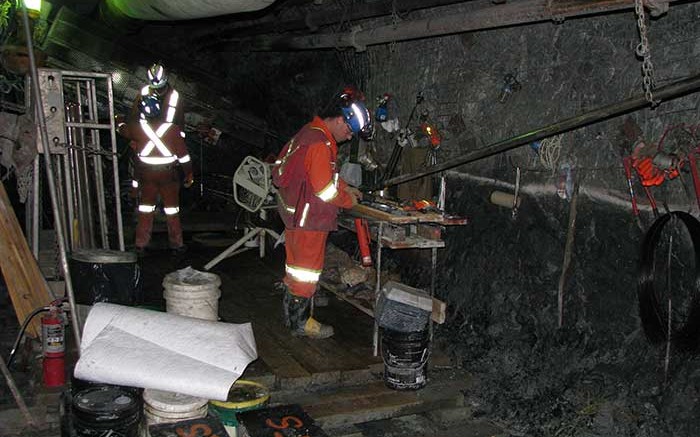VANCOUVER — Shares of Rubicon Minerals (TSX: RMX; NYSE-MKT: RBY) have been on the rise since the new year, as the company advances towards production at its Phoenix gold property in Ontario’s prolific Red Lake camp.
Rubicon began stockpiling mill feed in December, and on Jan. 7 the company released results from a 38,000-metre drill program on Phoenix’s F2 deposit that looks to have paid off.
The operational successes come on the heels of a settlement agreement with the regional Wabauskang First Nation, which removes the remaining socio-political barrier standing between the company and a mid-2015 production target.
Rubicon’s latest exploration campaign was a delineation effort using 25-metre drill spacing on the upper part of the F2 system. The program was especially important as the company moves towards mine and stope development, and results reportedly confirmed expectations about continuity and grade in the target area.
As a bonus, Rubicon identified mineralization north and south of Phoenix’s main zone.
Recent drilling focused on the north and south ends of the F2 deposit from the 244-metre exploration drift, and located “potentially economic” intercepts at both the north and south ends of the 244-metre level in areas that had been sparsely drilled.
The results could help the company upgrade more inferred resources to the indicated category. Phoenix’s resources currently total 4.1 million indicated tonnes grading 8.52 grams gold per tonne for 1.13 million contained oz., and 7.5 million inferred tonnes at 9.26 grams gold for 2.22 million contained oz.
Highlights from Rubicon’s confirmation drill program at F2 include: 157.2 grams gold over 1.5 metres in hole 154; 31.3 grams gold over 4 metres in hole 121; 15 grams gold over 5.1 metres in hole 100; 47.3 grams gold over 1.3 metres in hole 127; and 20 grams gold over 2.4 metres in hole 164.
President and CEO Michael Lalonde said that further drilling in the F2 area is planned in 2015, with a surface program scheduled to test for potential northern extensions of the F2 deposit.
“A considerable number of historical high-grade intercepts suggest that the F2 Deposit could extend to the north. We are also pleased to continue the stockpiling of mineralized material on surface from underground stope development,” he added.
Rubicon recently began a 12,000-metre regional exploration program to follow up on high-grade intercepts discovered during previous drilling. The target areas are reportedly located within 1 km of planned underground development at a target called the Island zone.
Historic high-grade intercepts from the target include: 70.1 grams gold over 3.1 metres in hole 23; 28.7 grams gold over 1.4 metres in hole 12; 22.2 grams gold over 1.7 metres in hole 47; and 15.8 grams gold over 4.8 metres in hole 3.
Infill drilling will also continue via an exploration drift on Phoenix’s 610-metre level, which will be the target of an upcoming 10,000-metre campaign. In addition, Rubicon will tighten its drill spacing to 12.5 metres or less on the main zone to define the grade and geometry of individual stopes between the 122- and 305-metre levels.
BMO Capital Markets analyst Andrew Kaip said the results are “potentially positive,” and wrote on Jan. 7 that “BMO Research views the infill program as a critical step in better understanding the F2 system in advance of stope design. However, BMO Research expects investor focus to remain largely on underground advance rates and demonstrating success of the [mining technique].”
Kaip has a “market perform” rating on the company along with a $1.60-per-share target price.
Rubicon shares have traded within a 52-week range of 90¢ to $1.95. Shares have jumped 16%, or 18¢ over the first week of 2015, en route to a $1.31-per-share close at press time.
Rubican last reported working capital of $113 million at the end of September.
Rubicon has 370 million shares outstanding for a $489-million market capitalization.


Be the first to comment on "Rubicon boosts grade confidence with Phoenix drill program"